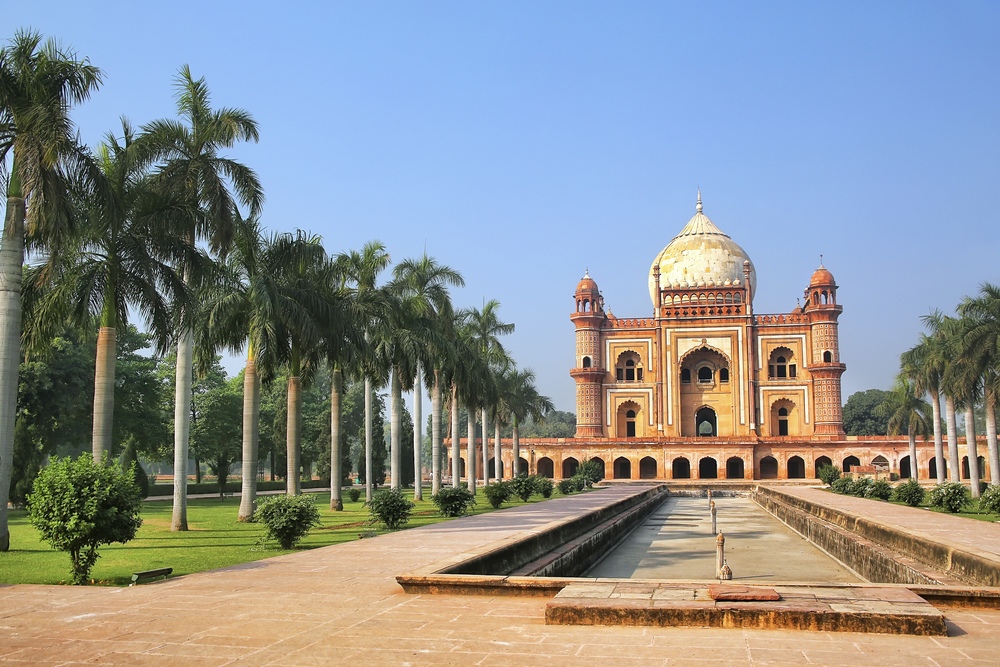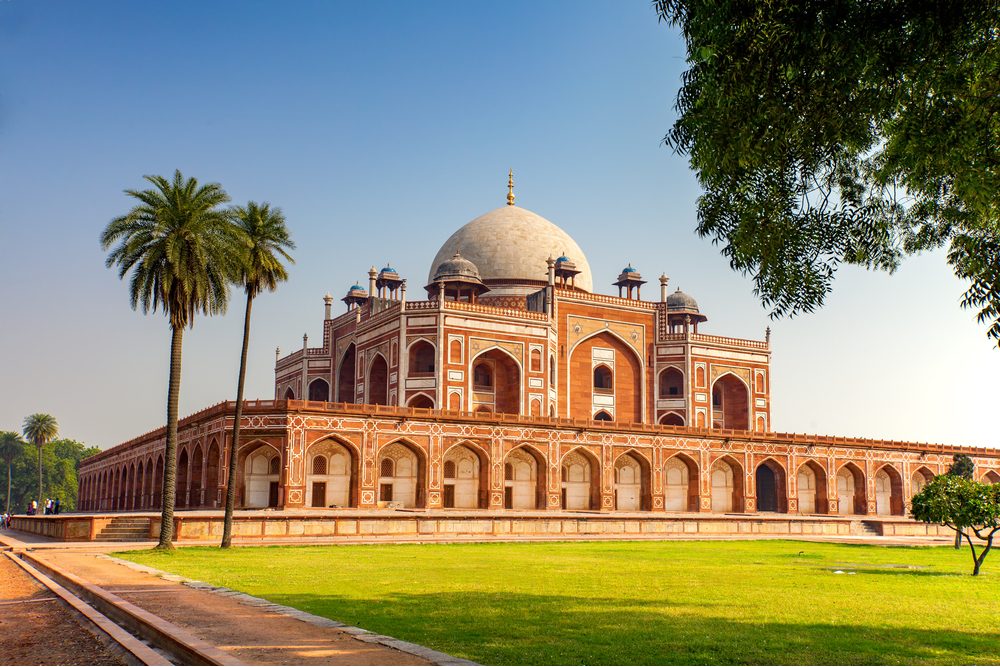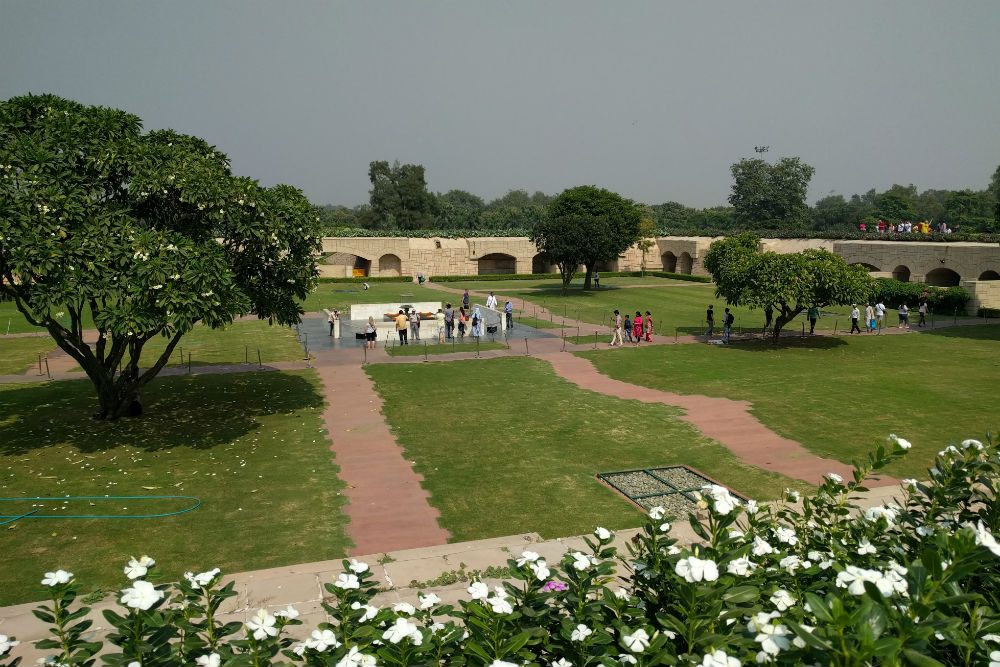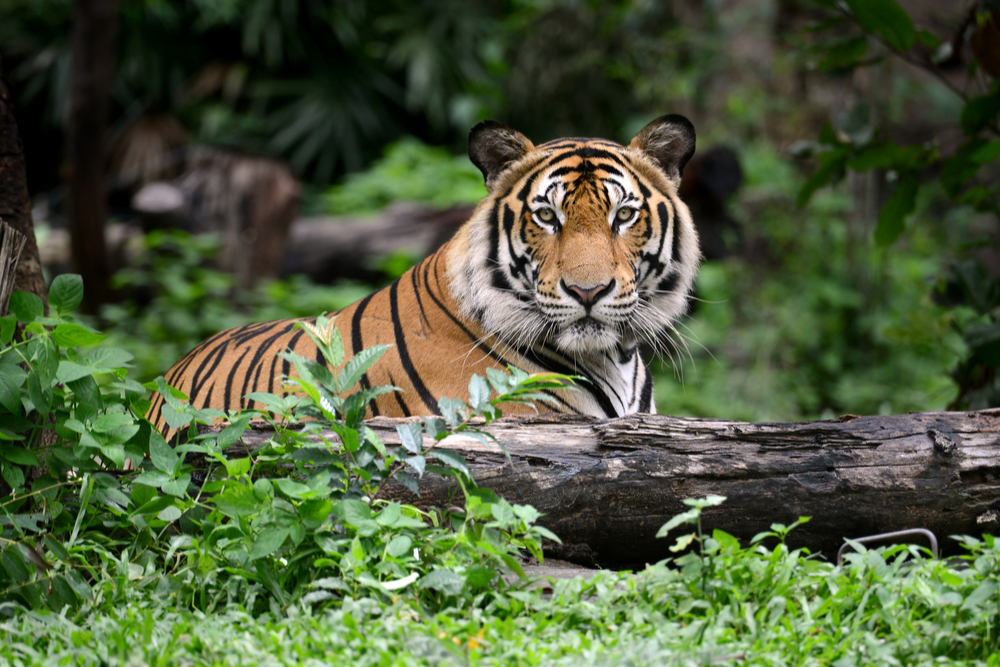Delhi, India: Insider’s Guide
 Learn what to see—and what to skip—on your next trip to Delhi. Photo: Shutterstock
Learn what to see—and what to skip—on your next trip to Delhi. Photo: Shutterstock
The insider advice on this page is from one of Wendy’s Trusted Travel Experts for India: Sanjay Saxena of Nomadic Expeditions.
The son of a brigadier general in the Indian Army, Sanjay was born in New Delhi and grew up living in numerous places throughout India. He began mountaineering and rock climbing in the high Himalayas at age 15, and since 1979 has led groups on trekking, climbing, touring, and safari trips not only in India but in Tibet, Mongolia, Sri Lanka, Nepal, and Bhutan. In 1992 he and David Breashears co-led the first western descent of the Brahmaputra River—a 250-mile whitewater rafting trip that was filmed for the BBC series “Classic Adventures”—and in 2001 he led the first Western group to journey overland from Kunming to Lhasa along the “southern road. Committed to running trips that are ecologically responsible and culturally sensitive, Sanjay has been named an “Unsung Hero of Compassion” and recognized by the Dalai Lama for the community projects he has created in South Asia. Travelers benefit from his rare combination of deep insider knowledge and talent for creating unique, intellectually engaging itineraries to both traditional and remote destinations.
Where to Stay and Eat

Humayun’s Tomb is one of three UNESCO World Heritage Sites in Delhi. Photo: Shutterstock
Best bang-for-your-buck hotels
The Imperial, built almost a century ago for British officers transiting through Delhi, is now one of the city’s premier hotels—not just for the heritage building, the spacious rooms (some of Delhi’s largest), the British-era art collection, and the award winning restaurant “Spice Route,” but also because of its central location: Unlike many of the city’s other five-star options, the Imperial is walking distance to Jantar Mantar, Connaught Place, India Gate, Bangla Sahib Gurudwara, and the Parliament. Since many of the least expensive rooms are awkwardly shaped, Sanjay prefers the Heritage rooms, which have more open layouts.
Located by a golf course with beautifully landscaped gardens, multiple pools, and exceptional service, the luxurious Oberoi is a serene oasis amidst the hustle and bustle of Delhi. It also is home to some of the best restaurants in the city (see “Meals worth the splurge,” below).
Restaurants the locals love
Karim’s, in Old Delhi, is renown for its authentic Mughal cuisine and is a must-visit for meat lovers. Be sure to try the raan (leg of lamb), which pairs perfectly with Khamiri roti, a delicious leavened bread.
Sana Di Ge sources all its seafood directly from coastal areas along the Arabian Sea and specializes in traditional Malvani food (from the state of Maharashtra) and the Konkan food of Goa.
For lunch during a busy day, stop at Juggernaut, the city’s current reigning king of South Indian cusine, for a masala dosa or their Juggernaut South Indian Thaal.
Veda, in Connaught Circle, offers a range of dishes from all over India, featuring both classic flavors and innovative twists. Signature offerings include the fragrant Biryani, Tandoori dishes, and curries, all prepared with the finest ingredients using traditional cooking techniques.
Dishes to try
Travelers often steer clear of street food for hygiene reasons, but chaat—the tapas-style spicy treats you typically find in northern India—are now safely being offered in some restaurants. Dahi bhala is a local favorite: chickpea flour balls that are fried and then soaked in yogurt (dahi) mixed with tamarind sauce and a healthy dose of various spices. Another favorite is papri chaat or Indian nachos: crispy chips made from refined wheat flour and topped with chickpeas, crumbled potato, diced onions, and cilantro. Notable restaurants Haldirams and Bikanervala offer a safe way to enjoy India’s beloved street food—you can even watch the dishes being prepared right in front of you.
Meals worth the splurge
Dinner at Varq, in the Taj Mahal Hotel and helmed by the always-perfect Chef Ankit Vig. The eclectic cuisine is anchored in traditional cooking, but with a mix of foreign ingredients (lobster, sea bass), local organic produce, and a profusion of Indian spices. You must get the chicken gandheri, a chicken kebab wrapped around sugarcane and served in a tall glass with mango chutney and Bengali-style prawns cooked in a rich smoked chili and mustard curry, served on a bed of fragrant coriander rice.
Dhilli is the newest addition to the award-winning restaurants housed at the Oberoi New Delhi. Under the mentorship of Michelin star-winning chef Vineet Bhatiya, Dhilli showcases the diverse culinary traditions thriving within Delhi itself. From the iconic chaat of Chandni Chowk to the exotic kormas of the Jama Masjid neighborhood, the menu features a taste of Delhi’s distinctive offerings, curated from the best family recipes, street stalls, and traditional community kitchens.

Spices are an essential ingredient in just about every Indian recipe. Photo: Shutterstock
Prime picnic spots
Delhi abounds with many parks. Adjacent to the UNESCO World Heritage site of Humayun’s Tomb is a wonderful green space: Sundar Nagar Nursery & Heritage Park is more like a botanical garden, with over 300 species of trees, shrubs, and flowers set amongst ruins from the Mughal period of Indian history over a 90-acre space. Tons of Delhites come here for their morning or evening walk or a picnic. Lodi Gardens, near the Oberoi hotel, is great for people-watching; the park also has a number of ruins from the 15th- and 16th-century Lodi dynasty.
The memorials dedicated to Mahatma Gandhi and Nehru, Raj Ghat and Shanti Van, feature serene gardens, lush greenery, and peaceful ambiance, making them perfect for a reflective picnic.
India Gate is surrounded by wide lawns, so it’s a popular spot for picnics, especially in the the evenings when families gather to enjoy the patriotic atmosphere.
The area surrounding Qutub Minar offers a mix of historical significance and serene landscape. It’s also a great spot for bird watching.
What to See and Do
Don’t miss
Among the city’s best-kept secrets are the 100-plus structures that make up Mehrauli Archaeological Park, a complex of ruins dating from various periods of the city’s history. Though the ruins are close to the Qutab Minar, which sees hundreds of visitors daily, you’ll rarely find busloads of tourists exploring Mehrauli’s gardens, mosque, palaces, tombs, and beautiful stepwell (a common feature in these ancient landmarks, stepwells are an elaborate series of steps leading down to a pool).
Completed in 2005, Akshardham Temple offers stunning examples of traditional Indian rock carving. The temple complex’s beautiful gardens and magnificent architecture are not to be missed, nor is the evening sound and light show that provides an interesting overview of India’s spiritual history.
Bangla Sahib Gurudwara, one of the most prominent Sikh temples in Delhi, is known for its stunning golden dome and peaceful ambiance. As a testament to the Sikh community’s commitment to service and equality, the gurudwara serves thousands of free meals daily in its langar (community kitchen). You can participate in meal prep and then take time to explore the serene surroundings and sacred water tank, which is believed to have healing properties.
The National Msueum, located in Delhi near Rajpath, is a treasure trove of India’s rich cultural heritage, showcasing over 5,000 years of history through a vast collection of artifacts, including ancient sculptures, painting, textiles, coins, and decorative arts.
Gandhi Smriti, located in the former Birla House, is a poignant memorial dedicated to Mahatma Gandhi, the leader of India’s non-violent independence movement. This historic site is where Gandhi spent his last days and where he was assassinated on January 30, 1948. The museum features photographs, artifacts, and displays that chronicle Gandhi’s life, philosophies, and contributions to India’s struggle for independence. The gardens surrounding the memorial offer a peaceful spot for reflection, with a pathway marked by Gandhi’s footsteps leading to the spot where he was assassinated.
The Lotus Temple, located in New Delhi and a place of worship for the Baha’i community, is an architectural marvel of recent vintage. Completed in 1986, the temple is known for its stunning lotus-shaped design, symbolizing purity and peace. The structure is comprised of 27 petal-like forms made of white concrete and is surrounded by lush gardens and reflecting pools. The temple’s interior is spacious and minimalist, designed to encourage meditation and reflection.
Don’t bother
Making time for the Red Fort: It has an impressive facade, but most of the fort is closed to visitors. A better option—assuming you’re visiting Agra—is the much grander Agra Fort, a UNESCO World Heritage site.
Most underrated places
Many travelers know about Delhi’s fabulous Chandni Chowk bazaar, but few explore the city’s smaller neighborhood bazaars, where locals do their daily shopping. Vendors sell everything from silverware to wedding dresses; this is where you can really get a sense of ordinary urban life in India. Two good options are the Lajpat Nagar bazaar, with its narrow alleyways and intense concentration of stalls, and the Karol Bagh bazaar, which gives timid visitors a bit more breathing room (both are named after the neighborhoods in which they’re located).

Stroll a local market in Delhi and you’ll find all sorts of things for sale. Photo: Billie Cohen
Hidden gems
In the heart of Delhi lies Agrasen ki Baoli’, the best preserved stepwell of Delhi. The city once boasted over 100 stepwells that were essential in providing water to residents. Few of these ancient structures now exist, as most were filled in and built over. Of the remaining stepwells, Agrasen ki Baoli’ is a testament to the exquisite architecture and engineering skills from a millennium ago. The symmetry of arches and steps makes for excellent photo-ops too.
The Mandi House neighborhood is the heart of Delhi’s contemporary art scene, with many galleries located around the Mandi House Chauraha (traffic circle). Of note are Triveni Kala Sangam (housing four galleries and a theater), the Shri Ram Centre (a gallery and theater), Lalit Kala Akademi (India’s National Academy of Fine Arts), and Mandi House. After enjoying some art and perhaps a music performance, make the short walk to Bengali Market for a South Indian vegetarian dosa, followed by some delicious Bengali sweets.
Cheap thrill
A bicycle-rickshaw ride through the narrow alleyways of Chandni Chowk, in Old Delhi, will get your blood racing as your “rickshaw-walla” dodges carts, pedestrians, and motorbikes while monkeys follow you, darting along the rooftops and telephone poles.

The gardens at Raj Ghat, a memorial to Mahatma Gandhi. Photo: Billie Cohen
How to spend a Sunday
On Sunday mornings, Delhites head to the Hauz Khas village, with its multitude of cafes, shops, and boutiques built around a reservoir; follow the locals here for some good people watching.
Also on Sundays, the Darya Ganj market closes and the street fills with book peddlers, their wares stretching for over a mile. You’ll find volumes on almost any topic, all at cheap prices.
The souvenirs
Gems and jewelry, silk carpets, wood-carved items, paintings, textiles and fabrics, pashmina wool shawls—so many things to buy and just one small bag to carry it home in. The four floors of goods at Cottage Industry on Janpath (opposite The Imperial hotel) is the perfect place to start. This government-run store showcases handicrafts from all over the country. The quality is high, as are the prices (all fixed; don’t bother trying to bargain), but the items are genuine. Even if you don’t buy here, a walk-through will give you a good baseline of prices to expect as you tour the country.
For truly authentic items and for an opportunity to meet the craftspeople themselves, visit local artisan markets or smaller shops in neighborhoods such as Dilli Haat.
Best Times to Go

October and November, when the monsoon rains give way to clear skies and pleasant temperatures. This being a major festival season, there’s also a holiday atmosphere similar to what you find in the U.S. around Christmas and New Year’s. Celebrations start with Ramlila, when hundreds of theatrical groups put on free performances of the Ramayana (a Hindu epic in which Lord Rama battles the demon Ravana) in every neighborhood. The shows culminate a week or two later on Duesehra, when giant effigies of Ravana are burned. During Divali, which always falls on a new moon, everyone lights candles to guide Rama home. All in all, it makes for a wonderful time to be in Delhi.
In mid-January, Makar Sankranti is celebrated, marking the transition of the sun from the zodiac of Sagittarius to Capricorn. Observed as a time of new beginnings, vibrantly colored kites fill the sky and communities gather to mark this harvest festival.
February and March offer similar weather, and the festival of Holi is celebrated with great gusto in every part of the city: Locals gather at bonfires the night before, then throw colored powder and water at each other to celebrate the beginning of spring.
Worst Time to Go
In December and January, a combination of fog and smog, primarily resulting from the burning of nearby fields post-harvest, sits heavily over Delhi; poor air quality and morning flight delays are common. Furthermore, January 26th is India’s Republic Day. This is a festive time, no doubt, but there are lots of road closures (especially along the parade route from around January 20th-31st), and popular sites become off-limits to travelers whenever government officials visit—often on short notice.
Geography Lesson
The correct name for India’s capital city is simply Delhi. For Delhites, “New Delhi” refers to the region of the city built by the British; only in the 1980s did foreigners start equating that term with the entire city. The true New Delhi is part of a larger region called South Delhi (which includes all the neighborhoods south of the Ring Road). When locals speak of Old Delhi—also known as North Delhi—they are referring to the sections built under the Mughal Empire, which are centered around the Red Fort.
Biggest Rookie Mistake
Overpaying for souvenirs. Always bargain in local shops; start by offering 40 percent of the asking price. Once negotiations have begun, walk away: If the salesperson follows, you’ll get the best price; if not, there’s probably another souvenir just like it down the road. And don’t ever disclose that you’ve just arrived in India; if you do, prices will go up exponentially.
Scam Alert
Buy precious items only from government-certified shops (those that advertise it on their signage). Think you’ve found a bargain elsewhere? Chances are the item was made yesterday in the store’s backyard and is complete junk. Remember also that it’s illegal to take any item over 100 years old out of the country.
Airport Intel
Delhi Airport (Indira Gandhi International Airport) has three terminals. Terminal 1 handles primarily domestic flights for low-cost carriers, while Terminal 2 handles domestic flights for regional airlines. Terminal 3 is the main international terminal (though it also handles some domestic flights). Terminal 3 is spacious and equipped with a wide range of amenities, including duty-free shops, lounges, and dining options. And it is big—it can easily take 20 minutes just to walk to your gate after security—so allow plenty of time.
Railway Intel
Railway stations in India are always a challenge. A rookie mistake here is shooing away all the licensed porters because you can handle your own baggage. As soon as you reach the station, hire a porter—they not only know the place inside and out, they will put you in the right seat of the right compartment on your train. A side benefit is that you won’t be bothered by other porters or hawkers; your porter will keep them at bay. Agree to a price before you hire the porter (typically the rupee equivalent of $2 per bag), then hang onto the coattails of the porter, as they are the fastest walking human beings even when loaded down with half a dozen suitcases—they want to get you to your train and get on to their next customer quickly. That said, give yourself at least 30 minutes to board your train after arriving at the station, as wading through the crowds takes time. Keep a firm grasp on any precious items; the station is full of pickpockets.
The Indian railway system has undergone significant improvements in recent years. With the introduction of new trains, such as the Vande Bharat Express, rail travel in India has become faster and more comfortable and reliable. These (semi) high-speed trains feature modern amenities and improved safety standards.
Don’t Forget to Pack
Sunscreen—which is hard to find in India—and slippers or airplane socks for visiting temples and mosques, where you’ll have to remove your shoes.









